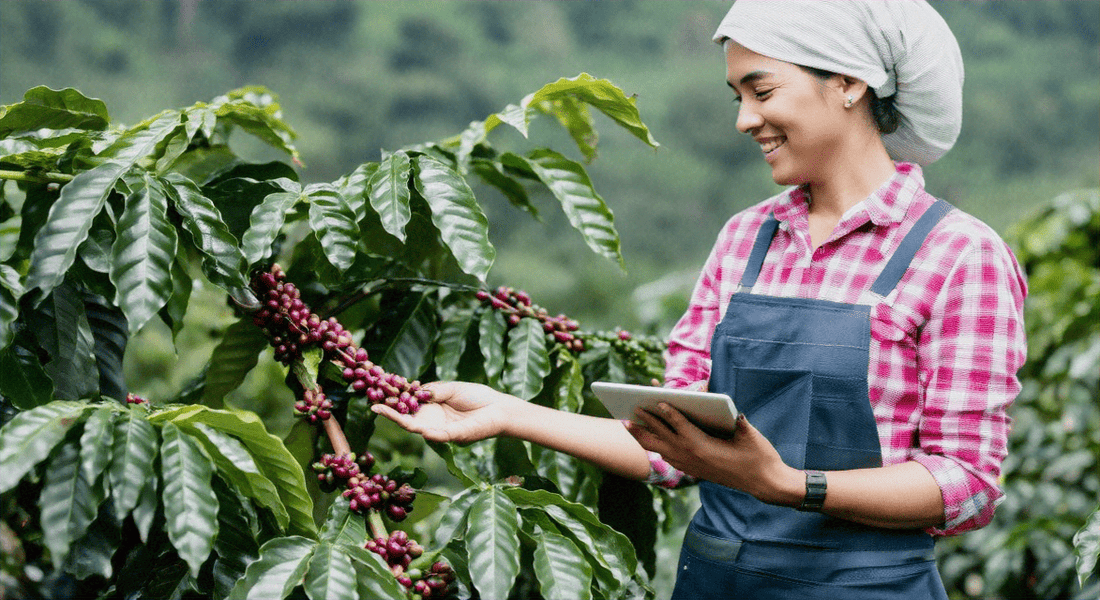
Taste the Difference: What Makes Single-Origin Coffee Special
Share
Coffee is more than just a daily habit—it’s an experience. And with single-origin coffee, that experience becomes even more profound. But what exactly sets single-origin coffee apart, and why do so many coffee lovers choose it over blends?
At Jones Ranch Coffee, we’re passionate about sourcing only the best single-origin beans from farms across Central and South America. Each bag of single-origin coffee tells the story of its origin, from the lush mountains of Colombia to the volcanic soils of El Salvador. But more than just flavor, there are important reasons why single-origin coffee is distinct, and we’re here to break them down for you.
What is Single-Origin Coffee?
Single-origin coffee comes from one specific place, whether it’s a single farm, a particular region, or even a whole country. This focus on a singular origin allows the coffee’s unique characteristics—its terroir—to shine through. Terroir refers to the environmental factors like climate, altitude, and soil composition that affect how the coffee tastes.
For example, coffee grown in the high-altitude regions of Colombia will have different flavor notes than beans grown in the volcanic soils of El Salvador. When you drink single-origin coffee, you’re tasting the essence of a specific place.
On the other hand, blends combine beans from different origins to create a balanced or consistent flavor. While blends are often used to mask lower-quality beans or to produce a predictable taste, they lack the distinctiveness and character of single-origin coffee.
Why Does Single-Origin Coffee Cost More?
One of the most common questions we hear is, "Why is single-origin coffee more expensive?" The answer lies in several factors that go beyond just the flavor.
-
Smaller Scale Production: Single-origin coffee is typically produced on smaller farms, which means it’s not as mass-produced as many blends. Farmers focus on cultivating high-quality beans, often using traditional and labor-intensive methods. This higher level of care and attention results in a superior product, but also in higher costs.
-
Seasonality and Availability: Unlike blends that are often available year-round, single-origin coffee is often seasonal. For example, our beans from Guatemala are harvested at specific times of the year, meaning there is a limited supply. This limited availability increases its value, making it a bit pricier than other options.
-
Sustainable and Fair Trade Practices: At Jones Ranch Coffee, we are committed to sourcing our beans from farms that use sustainable and ethical farming practices. This means we pay above-market prices for our coffee, ensuring that the farmers receive fair compensation for their work. Our relationships with farmers in Colombia, El Salvador, Guatemala, Honduras, and Peru are based on trust, and we believe that producing coffee sustainably is worth the extra cost.
Single-Origin vs. Blends: The Key Differences
So, what’s the big deal between single-origin coffee and blends? Here’s a breakdown:
-
Flavor Complexity: With single-origin coffee, you’re getting the full expression of the region’s flavor profile—whether it’s the bright, fruity notes of Colombian beans or the deep, chocolatey richness of Guatemalan coffee. In contrast, blends combine beans from various regions to create a balanced, consistent taste, which can sometimes mask the unique characteristics of each origin.
-
Transparency: Single-origin coffee allows you to know exactly where your beans come from. At Jones Ranch Coffee, we provide transparency in our sourcing, allowing you to trace your coffee from the farm to your cup. Blends, on the other hand, often obscure the origins of the beans, making it harder to know exactly what you’re drinking.
-
Quality Control: Single-origin coffee typically comes from smaller farms where farmers take great care to ensure the highest quality beans. This isn’t always the case with blends, where beans from multiple sources may be mixed to achieve a certain flavor, regardless of individual quality.
-
Sustainability: By focusing on single-origin coffee, Jones Ranch Coffee is able to build direct, long-term relationships with farmers, supporting sustainable practices and fair wages. With blends, this level of transparency and sustainability is often harder to achieve due to the complex supply chains involved.
Why Single-Origin is Worth It
If you’re looking for coffee that goes beyond just caffeine, single-origin is the way to go. Not only do you get to experience the distinct flavors of different regions, but you’re also supporting ethical farming practices and sustainable coffee production.
